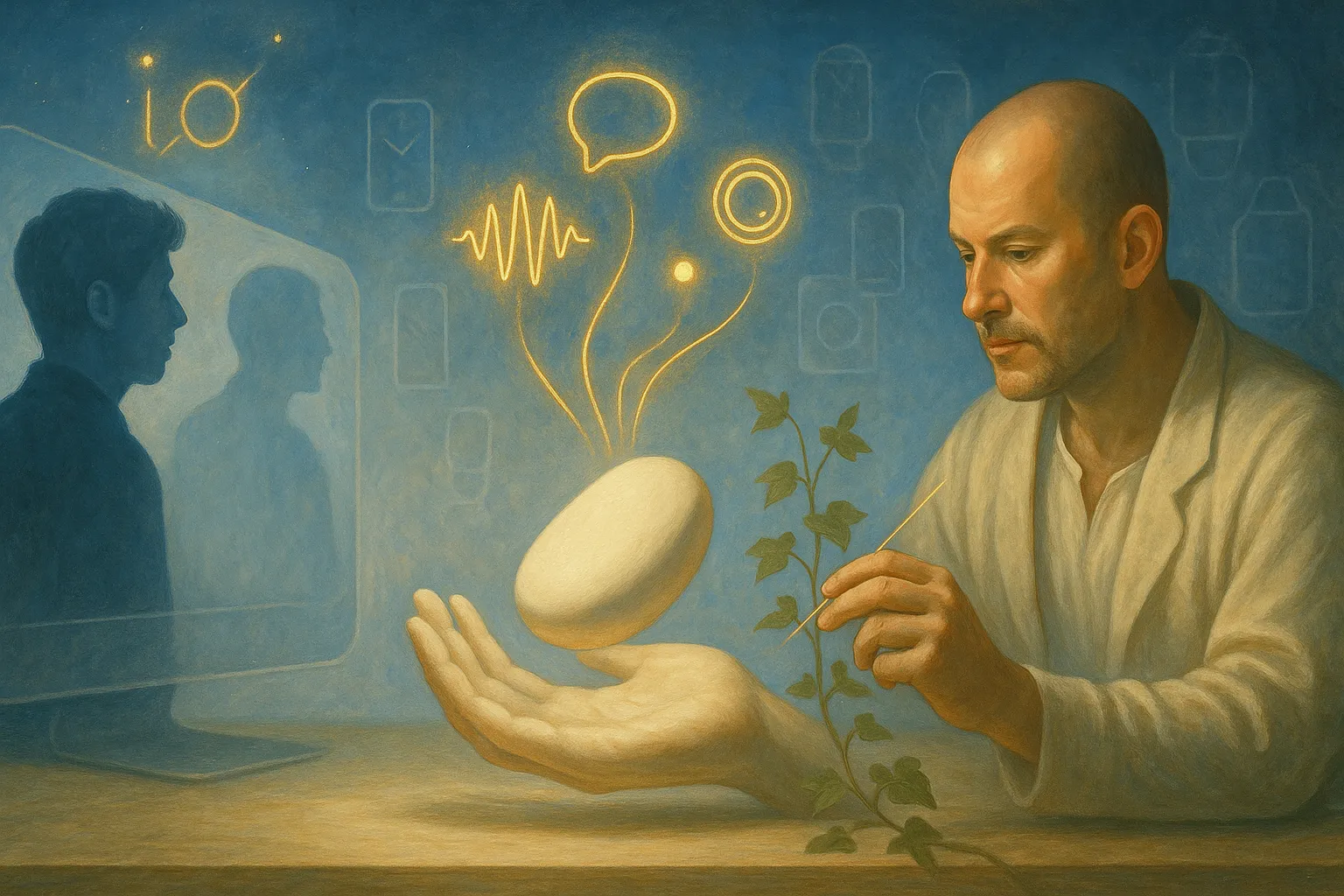OpenAI just made its biggest acquisition ever, buying Jony Ive's startup for $6.5 billion. The deal signals something more ambitious than another ChatGPT update: a physical device that could change how we interact with AI.
Sam Altman laid out the vision to OpenAI staff on Wednesday. The company plans to ship 100 million AI "companion" devices that he believes could add $1 trillion in value to OpenAI. That's not a typo—trillion with a T.
Here's what we know about this mysterious device, based on reporting from The Wall Street Journal, Apple analyst Ming-Chi Kuo, and analysis from M.G. Siegler.
Not What You'd Expect
First, what it's not. Despite months of speculation, this isn't a phone. It's not smart glasses either. Altman confirmed that Ive was skeptical about building something worn on the body, ruling out most wearables.
Instead, think of something closer to an iPod Shuffle—compact, elegant, and focused on doing one thing well. Kuo's research suggests the device could be worn around the neck, though it would also work sitting in your pocket or on your desk.
The device won't have a screen. That's intentional. Ive has spoken openly about his regrets over smartphone addiction and the role his iPhone designs played in creating it. This device represents his attempt at redemption—or at least a different path forward.
How It Works
Voice will be the primary interface. As Altman explained to staff, using ChatGPT today means pulling out a laptop, opening a browser, typing a query, and waiting. "That is at the limit of what the current tool of a laptop can do," he said. "But I think this technology deserves something much better."
The device will include cameras and microphones for what Kuo calls "environmental detection." It needs to understand your surroundings and context without requiring you to look at a screen or type anything. Think of it as a voice recorder that actually understands what it's recording—and can respond intelligently.
According to the Journal, the device will connect to smartphones and PCs to use their computing power and displays when needed. This solves the connectivity problem without requiring its own cellular connection or complex WiFi setup.
The Business Model
Here's where things get interesting. Altman floated an unusual distribution strategy: "We both got excited about the idea that, if you subscribed to ChatGPT, we should just mail you new computers, and you should use those."
Free hardware for subscribers? It sounds crazy, but it might be the only way to compete with the iPhone's gravitational pull. As Siegler notes, Amazon succeeded with Alexa by flooding the market with cheap Echo devices. OpenAI might take that strategy even further.
The timeline is aggressive. Altman wants to ship devices by late next year, with plans to reach 100 million units "faster than any company has ever shipped 100 million of something new before." For context, it took the iPhone about four years to hit that milestone.
Why This Matters—and Why It Might Fail
The tech industry graveyard is full of devices that tried to compete with smartphones. Humane's AI Pin, which Altman backed as the largest investor, failed spectacularly. Google Glass became a cautionary tale. Even Apple struggles to launch new categories successfully—just ask anyone who bought a Vision Pro.
But OpenAI has advantages those companies didn't. They built the AI first, not the hardware. As Siegler points out, previous voice assistants like Siri and Alexa got the voice recognition right but failed on the intelligence part. OpenAI solved the hard problem before worrying about the device.
The collaboration between Altman and Ive also matters. In Wednesday's meeting, Ive compared their partnership to his work with Steve Jobs. "The way that we clicked, and the way that we've been able to work together, has been profound for me," he said.
Still, manufacturing and shipping hardware at scale remains one of the hardest challenges in tech. OpenAI has the money—they raised $6.5 billion last fall—but they're also burning through cash rapidly. The company told investors it won't turn a profit until 2029 and expects to lose $44 billion before then.
The Bigger Picture
This isn't just about building a gadget. It's about who controls the future of AI interaction. Right now, Apple and Google own the gates through iOS and Android. Every AI company, including OpenAI, has to play by their rules and give them a cut of the revenue.
Building hardware is OpenAI's way of going direct to consumers. It's also Ive's attempt to fix what he sees as the harmful effects of smartphone design—the constant notifications, the screen addiction, the distraction from real life.
The device represents what Ive calls "a new design movement." Not just a product, but a different philosophy about how technology should fit into our lives. Less intrusive, more helpful. No screen to stare at, just intelligence when you need it.
Whether people actually want that remains to be seen. The Meta Ray-Ban glasses suggest there might be an appetite for screen-free AI devices, but those piggyback on an existing product people already understand. OpenAI is trying to create an entirely new category.
The name itself—io—seems carefully chosen. The lowercase 'i' echoes Ive's Apple legacy (iPhone, iPad, iMac), while 'io' contains both the 'o' and 'i' from OpenAI. It's a small detail, but it signals how seriously they're taking the brand and design aspects.
What Happens Next
OpenAI faces massive challenges. They need to build supply chains from scratch, compete with companies worth trillions of dollars, and convince people they need yet another device in their lives. The economics are daunting—especially if they plan to give devices away to subscribers.
But they're betting that AI is different enough from previous technologies to warrant new hardware. That the current paradigm of typing into phones and laptops is already outdated. That people are ready for something that helps without demanding their constant attention.
Eighteen months ago, OpenAI VP Peter Welinder started working with Ive's team. Last fall, they settled on a specific device concept. Now, with the acquisition complete, they're racing toward a late 2026 launch.
For a company that told investors it's willing to lose $44 billion before turning profitable, a $6.5 billion bet on hardware almost seems conservative. Almost.
Why this matters:
- OpenAI is betting $6.5 billion that AI needs purpose-built hardware, not just apps on existing devices—and if they're right, they'll own the customer relationship instead of Apple or Google
- This could be the first serious attempt to create a "post-smartphone" device that actually works, solving the input problem that killed previous voice assistants while avoiding the screen addiction Ive now regrets enabling








